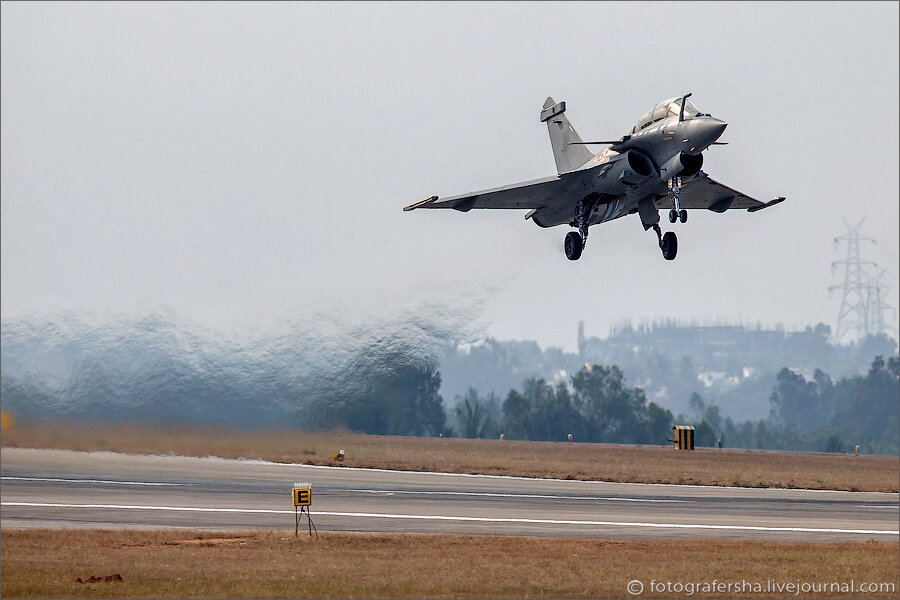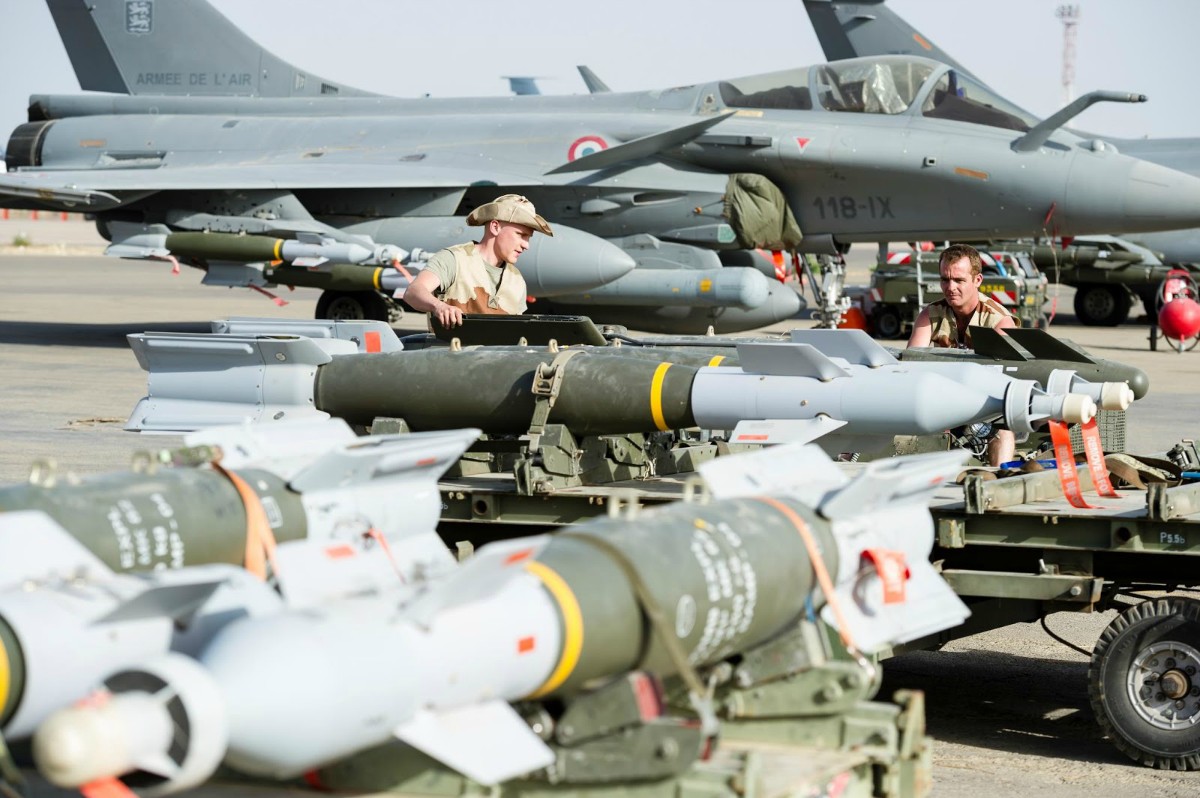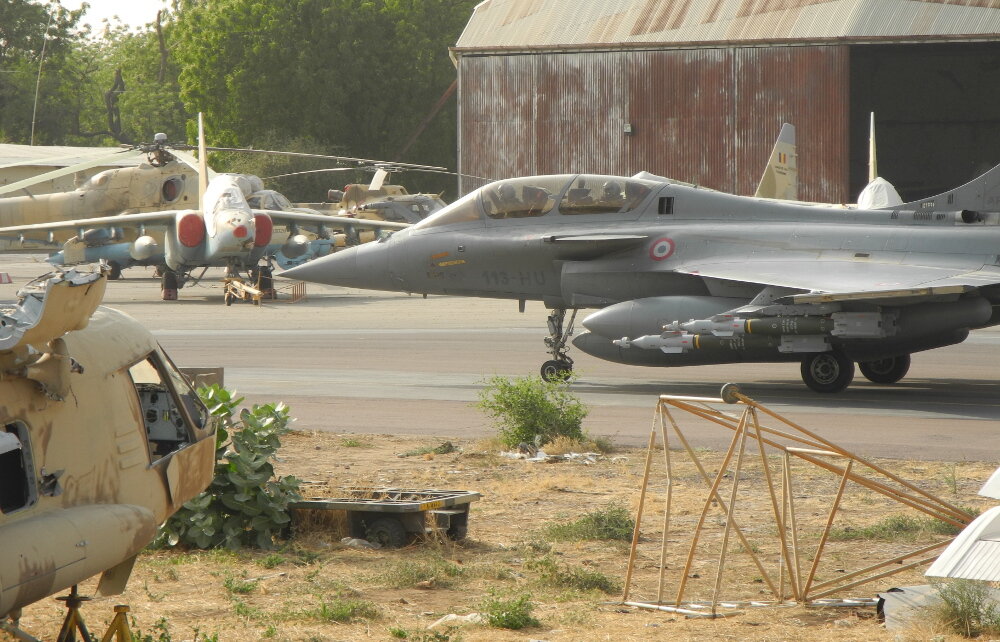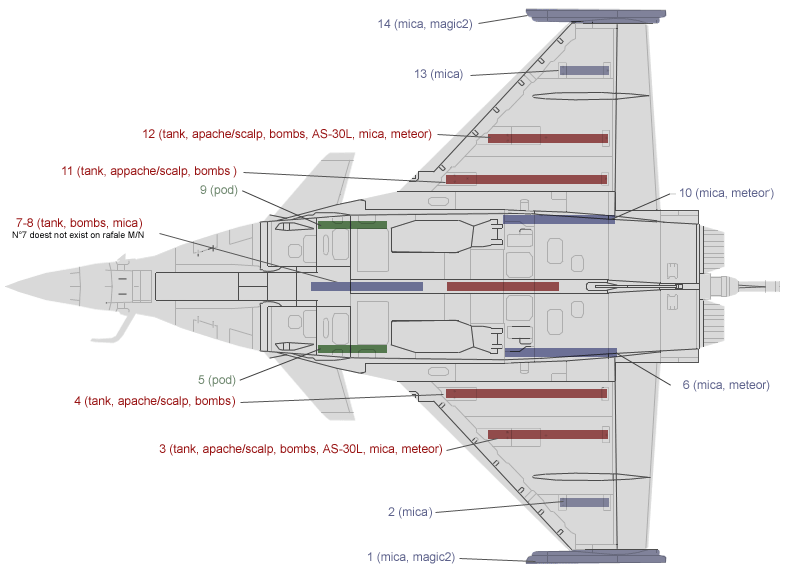Estás usando un navegador obsoleto. No se pueden mostrar estos u otros sitios web correctamente.
Se debe actualizar o usar un navegador alternativo.
Se debe actualizar o usar un navegador alternativo.
Club del Rafale
- Tema iniciado Cocker
- Fecha de inicio
Un bello avión tiene que tener un piloto acorde...

Saludos

Saludos
Aero India 2013








Damian"Grünherz" K.
Colaborador


Base N'Djamena, Chad Operación Serval
Saludos!!
En la secuencia anterior se observa como trabaja en "pool" la AdlA.
El Rafale pertenece a la EC 2/30 Normandie-Niemen de la BA 118 Mont-de-Marsan mientras que el piloto lleva las insignias de la EC 1/7 Provence de la BA 113 Saint Dizier.
Una foto del Rafale en Aftan.

Saludos
El Rafale pertenece a la EC 2/30 Normandie-Niemen de la BA 118 Mont-de-Marsan mientras que el piloto lleva las insignias de la EC 1/7 Provence de la BA 113 Saint Dizier.
Una foto del Rafale en Aftan.

Saludos
Esto es parte de una nota publicada por la revista FOX THREE N° 15 sobre las operaciones en Libia.
En resumen habla de la autonomía del Rafale.
Normalmente llevan un depósito de combustible de 2000 litros en cada ala pero cuando los tanqueros comenzaron a tener mucho trabajo se le agregó otro depósito de combustible de 2000 litros en el pilón ventral en los Rafales que estaban en Solenzara para no presionar tanto a los tanqueros aliados.
El Rafale puede llevar 6000 litros de combustible externo que se suman a los 4700 kg de combustible interno del Rafale C o los 4400 kg del biplaza Rafale B dándole una gran autonomía tanto en alcance como en permanencia en estación.
El comandante de la 12F de la Aeronavale operando desde el CdG cuenta que sus misiones eran de 2 horas de duración sin apoyo de tanqueros o de 4 horas con 2 revos realizados por Rafales con buddy-buddy, C-135FR o KC-135. En una misión de 4 horas permanecían hasta 2 hs y 20 min en estación listos para atacar cualquier blanco de oportunidad.
Comenta que 2 de los 10 Rafales embarcados en el CdG estaban configurados como tanqueros. Uno de ellos era lanzado antes de comenzar un ciclo de recuperación para apoyar a cualquier avión que tuviera problemas para enganchar en el CdG, mientras que el segundo permanecía en alerta listo para ser catapultado en caso que la situación lo requiriera.
Saludos
A key advantage of the Rafale compared to the other French and foreign fighters is its very long range. «French Air Force Rafales initially flew with two 2,000-litre external fuel tanks under the wings on top of their MICA air-to-air missiles and of their air-to-surface ordnance, reveals the Armée de l’Air Rafale detachment commander. When the availability of tankers became an issue, a third 2,000-litre drop tank was added to the Rafale based in Solenzara, thus helping minimise the pressure on the Allied tanker force.» The Rafale then carried 6,000 litres of external fuel on top of the 4,700 kg of internal fuel for the single-seat Rafale C, and 4,400 kg for the two-seat Rafale B, giving an outstanding range and an extended time on station. Endurance was a crucial parameter for Rafales operating from the Charles de Gaulle too: «we typically flew missions lasting over two hours without tanker support, stresses the Commanding Officer of French Navy Flottille 12F. With tanker support, either from a Rafale configured for buddy-buddy tanking, a C-135FR, a KC-135R or from any other coalition tanker, we flew 4-hour long sorties with two refuellings. Our ‘playtime’ was excellent, with relatively short transits to and from Libya. In fact, out of 4 hours airborne, we remained 2 h 20 min on station, ready to strike any target of opportunity.» Usually, two of the ten Rafales onboard the carrier were configured as buddy-buddy tankers, each with an in-flight refuelling pod under the centreline pylon and two to four drop tanks under the wings. One of them was systematically launched prior to any recovery cycle, ready to give away fuel to any fighter which might have encountered difficulties when attempting to trap back onboard the carrier. Another one was ready to be catapulted away, should the situation have got worse.
En resumen habla de la autonomía del Rafale.
Normalmente llevan un depósito de combustible de 2000 litros en cada ala pero cuando los tanqueros comenzaron a tener mucho trabajo se le agregó otro depósito de combustible de 2000 litros en el pilón ventral en los Rafales que estaban en Solenzara para no presionar tanto a los tanqueros aliados.
El Rafale puede llevar 6000 litros de combustible externo que se suman a los 4700 kg de combustible interno del Rafale C o los 4400 kg del biplaza Rafale B dándole una gran autonomía tanto en alcance como en permanencia en estación.
El comandante de la 12F de la Aeronavale operando desde el CdG cuenta que sus misiones eran de 2 horas de duración sin apoyo de tanqueros o de 4 horas con 2 revos realizados por Rafales con buddy-buddy, C-135FR o KC-135. En una misión de 4 horas permanecían hasta 2 hs y 20 min en estación listos para atacar cualquier blanco de oportunidad.
Comenta que 2 de los 10 Rafales embarcados en el CdG estaban configurados como tanqueros. Uno de ellos era lanzado antes de comenzar un ciclo de recuperación para apoyar a cualquier avión que tuviera problemas para enganchar en el CdG, mientras que el segundo permanecía en alerta listo para ser catapultado en caso que la situación lo requiriera.
Saludos

Saludos
creo haber visto una foto de un Rafale de desarrollo con micas en los soportes 7 y 8... .creo que salvo esa foto nunca mas vi algo parecido... pero al parecer la capacidad esta.
una cosa que me sorprende es el pq no puede llevar micas en los soportes de fuselaje delanteros (los 5 y 9) y solo son usados por los pods... al parecer no podria cargar ningun tipo de armas alli... pero por que?
una cosa que me sorprende es el pq no puede llevar micas en los soportes de fuselaje delanteros (los 5 y 9) y solo son usados por los pods... al parecer no podria cargar ningun tipo de armas alli... pero por que?
creo haber visto una foto de un Rafale de desarrollo con micas en los soportes 7 y 8... .creo que salvo esa foto nunca mas vi algo parecido... pero al parecer la capacidad esta.
una cosa que me sorprende es el porque no puede llevar micas en los soportes de fuselaje delanteros (los 5 y 9) y solo son usados por los pods... al parecer no podria cargar ningun tipo de armas alli... pero por que?
Si, los pilones 7 y 8 pueden llevar MICA. Cuando se habla de configuración SC de 6 MICAS los mismos están ubicados de la siguiente manera: 2 en los pilones 6 y 10, otros 2 en los pilones 1 y 14 y los otros 2 en los pilones 7 y 8. Esta configuración no existe en el Rafale M ya que carece del pilón 7 reemplazado por el gancho de apontaje.
En cuanto a los pilones 5 y 9 calculo que será un tema de separación de armas o de longitud ya que por pesos podría llevar MICA. El pod Dámocles mide 2,50 metros y pesa 265 kg mientras que el MICA mide 3,10 metros y pesa 112 kg.

Saludos
es que, justamente, no veo cual seria el problema si los misiles se proyectaran hacia adelante, son 70cm mas por delante del soporte ..
quizas las vibraciones serian inaceptables... no lo se.... pero dudo de que sea muy distinto a otros aviones similares.
Quizas sea porque los misiles pueden producir directa o indirectamente cierta interaccion en el flujo de aire que ingresa en las tomas de aire a ciertos ángulos y velocidades.
Temas similares
- Respuestas
- 36
- Visitas
- 5K
- Respuestas
- 35
- Visitas
- 10K
- Respuestas
- 206
- Visitas
- 22K
- Respuestas
- 385
- Visitas
- 38K

























